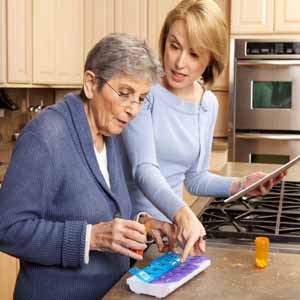After a stroke or brain injury, the brain begins working to recover. Oftentimes, if there is damage to a portion of the brain, neurons attempt to find a different way of communicating with one another. This process involved relearning things that were once second nature.
For example, after someone suffers from a stroke, one of the physical symptoms that might be observed is an inability to use your right hand the way that it was once used. This happens because the portion of the brain that contained the neuron pathway where the signal to move and use the right hand was damaged. Through physical therapy and other treatments, the brain isn’t just teaching muscles how to work again. It’s rerouting the pathway that messages are sent throughout neurons, instructing the muscles in the hand to do what is desired. It can take time for this learning to happen, but a lot of the time, it is possible.

Staying active, learning, and brain activity can help seniors recover from stroke faster, a new study says.
Sometimes, this relearning process is referred to as brain plasticity. This isn’t just about restoring pathways in the brain, but also about regulating enzymes within the brain. A recent study shows that the enzymes MMP2 and MMP9 play a pivotal role in how the brain responds and grows after a stroke. Blockages of these enzymes can make stroke symptoms lessen in severity in a laboratory setting. Brain stimulation can help make this easier.
Brain stimulation can be provoked artificially or naturally. Natural methods have already been shown to help alleviate symptoms of dementia, whether it’s through conversation, completing puzzles, or reading books. Staying active can sometimes help the spread of dementia slow. Likewise, activity might help reverse stroke symptoms.
Keeping active is important. This is true for the mind, as discussed above, and it’s also important for the body. Mental activity helps the brain to stay sharp and present, while physical activity helps muscles and bones stay strong, avoid injury, and promotes cardiovascular health. These things can become more difficult as we age, but the benefits of doing so are big. The more active we stay, the healthier we are likely to be.
Having help can make this easier. Sometimes, this might mean working with a physical therapist or medical professional. Sometimes, it’s as simple as sitting down and doing a puzzle with a friend. But either way, having a system of supports in place can make activity a lot easier.
An in-home caregiver can help with activity in a way that other types of care can’t easily accomplish. This isn’t to say that in-home care professionals are providing a medical service. That’s not the type of assistance that we provide here at Paradise In-Home Care. But because in-home care is personalized and given in a one on one setting, activity can be encouraged in a unique and effective way.
In-home care is not a replacement for working with a medical professional. But for seniors that spend a portion or all of their day in isolation, in-home care might be exactly the stimulation needed to help someone be a little bit more active.
As always, we’re happy to talk more about the work we do and how it might help you and your family. Give us a call, spend some time scrolling through our website, or send us an email to learn more.


Leave a Reply